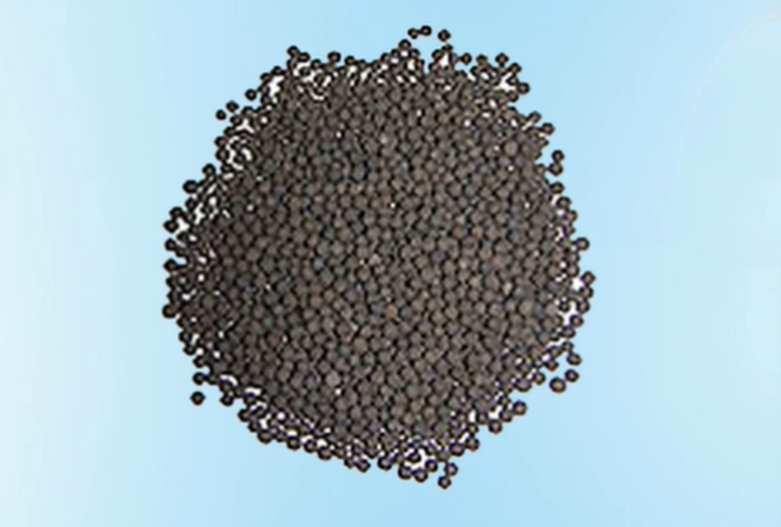Utilizing Catalyst Poisoning To Improve Catalyst Selectivity: The Role Of Lindlar Catalysts
Introduction
Following on from our previous discussion concerning Catalyst Poisoning in Precious Metal Catalysts, this article examines a specific aspect: how catalyst poisoning may be employed in a controlled manner to improve catalyst selectivity. By selectively deactivating certain active sites on a catalyst, the proportion of a particular reaction pathway is increased. This leads to a higher yield of desired intermediates. An example of this principle is the Lindlar catalyst, which is frequently used for the partial hydrogenation of alkynes to cis(Z)-olefins.
Utilisation of Catalyst Poisoning for Improving Catalyst Selectivity
Catalyst poisoning occurs when some active sites on the catalyst are deactivated, thereby restricting part of the reaction process. When this phenomenon is employed to increase the proportion of a specific reaction pathway, it produces a higher yield of intermediates, thereby improving reaction selectivity. The Lindlar catalyst serves as a suitable example of this approach.
Introduction and Principles of Lindlar Catalysts
The Lindlar catalyst is a selective catalyst widely used in organic synthesis, primarily for the partial hydrogenation of alkynes to cis(Z)-olefins.
Fig. 1 Hydrogenation of alkyne bonds to double bonds catalysed by a Lindlar catalyst
The Lindlar catalyst consists of palladium as the active principal component, which provides the active sites for the hydrogenation reaction. Calcium carbonate acts as the support, offering a large specific surface area and a stable substrate. Lead (Pb) or thallium (Tl) are incorporated as catalyst poisons to partially passivate the palladium surface. This addition restricts further hydrogenation to alkanes.
The Lindlar catalyst is designed so that the activity of palladium is controlled to selectively hydrogenate an alkyne (R-C≡C-R') to a cis-olefin (R-CH=CH-R'), while further hydrogenation to an alkane (R-CH₂-CH₂-R') is avoided. This outcome is achieved through the passivation of palladium and the optimisation of reaction conditions. Hydrogen (H₂) adsorbs on the palladium surface and dissociates into reactive hydrogen atoms (H). These atoms participate in the partial hydrogenation of alkynes. The alkyne molecule adsorbs on the palladium surface and reacts with these hydrogen atoms to initially form the intermediate acetylene (C₂H₂), which is subsequently hydrogenated to produce a cis-olefin. The presence of lead or thallium limits further hydrogenation, thereby inhibiting the conversion of olefins. These toxins interact with the palladium surface, reducing the available active sites and decreasing the tendency for over-hydrogenation. Consequently, the reaction predominantly produces cis-olefins.
Examples of Applications of Lindlar Catalysts
1. Partial Hydrogenation of Phenylacetylene to Styrene
Hydrogenation of phenylacetylene (C₆H₅-C≡CH) in the presence of a Lindlar catalyst produces cis-styrene (C₆H₅-CH=CH₂) selectively, while further hydrogenation to ethylbenzene (C₆H₅-CH₂-CH₃) is avoided.

Fig. 2 Lindlar Catalysts
2. Synthesis of Vitamin A Precursors
During the synthesis of Vitamin A, partial hydrogenation of polyalkynes to the corresponding cis-diene or monoalkene compounds is required. Lindlar catalysts are used owing to their selective nature.
Advantages and Limitations of Lindlar Catalysts
Advantages:
- High selectivity: Efficient partial hydrogenation of alkynes to cis-olefins while avoiding over-hydrogenation.
- Mild conditions: Reactions typically occur at room temperature and atmospheric pressure, thereby allowing straightforward control of the process.
Limitations:
- Sensitivity: Requires strict control of hydrogen pressure and reaction time to prevent excessive hydrogenation.
- Toxicity: The use of lead or thallium as toxins poses environmental and health risks, thereby necessitating careful disposal and waste management.
Conclusion
The Lindlar catalyst demonstrates that catalyst poisoning is an effective method for enhancing selectivity in organic synthesis. By strategically deactivating specific active sites, high selectivity is achieved with efficient formation of the desired intermediates. Although the Lindlar catalyst presents advantages in terms of selectivity and reaction conditions, it also poses challenges such as sensitivity and environmental concerns due to the use of toxins.
Building on our previous discussion regarding catalyst poisoning, understanding and controlling the selective deactivation of catalyst sites may facilitate the optimisation of chemical reactions. Future research and development should focus on developing catalysts that maintain selectivity without compromising environmental and health standards.

 Bars
Bars
 Beads & Spheres
Beads & Spheres
 Bolts & Nuts
Bolts & Nuts
 Crucibles
Crucibles
 Discs
Discs
 Fibers & Fabrics
Fibers & Fabrics
 Films
Films
 Flake
Flake
 Foams
Foams
 Foil
Foil
 Granules
Granules
 Honeycombs
Honeycombs
 Ink
Ink
 Laminate
Laminate
 Lumps
Lumps
 Meshes
Meshes
 Metallised Film
Metallised Film
 Plate
Plate
 Powders
Powders
 Rod
Rod
 Sheets
Sheets
 Single Crystals
Single Crystals
 Sputtering Target
Sputtering Target
 Tubes
Tubes
 Washer
Washer
 Wires
Wires
 Converters & Calculators
Converters & Calculators
 Write for Us
Write for Us
 Chin Trento
Chin Trento



